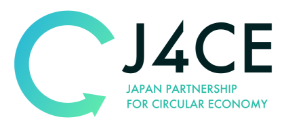Bottle-to-Bottle Tokyo Project in 2020
[Company / organization] Japan Soft Drink Association
Time Line
Conducted during November, 2020 to February, 2021
Technology and/or Business Model explanation
①Purpose of Bottle-to-Bottle Tokyo Project:
•To increase bottle-to-bottle recycling, reliable collection of used PET bottles and gathering them in cleaner condition is vital.
•Gaining the understanding and cooperation of consumers, particularly in regard to the disposing of bottles, is essential in ensuring they can be collected in clean condition.
•To aid its activities, the industry has received support from The Ministry of Agriculture, Forestry and Fisheries (MAFF) through their Reiwa 2 Plastic Resources Circulation in the Food Industry Strategy.The Tokyo Bottle-to-Bottle Project kicked off in August 2020 and trials have started with cooperative efforts with Tokyo Metropolitan Government.
②Two trials conducted for the Tokyo Bottle-to-Bottle Project
1. Verify change in consumer waste separation behavior through their use of new recycling station designs (Jan - Feb 2021).
-Verify the effectiveness of the mechanical design and educative message in promoting the separation of bottles, caps, and labels for three-part recycling.
-Investigate needs of consumers and the possibility of installing three-part segregation recycling stations in places such as train stations and distribution centers where PET bottle recycling facilities are not provided yet.
2. Examine the effectiveness of “downward-slot” designs for vending machine side recycling boxes to ensure they are not contaminated (November 2020).
Results Summary
①Offices: Consumer understanding in regard to three-part segregation recycling (PET bottles, caps, labels) has been gained through effective educative messages and facilities (81-95% achievement rate).
There are also cases where three-part recycling has been continued at trial locations even after the completion of trials.
②Train Stations: Consumer drink container disposal needs during travel to school or work were confirmed. There was high environmental awareness and a strong desire to separate waste when disposing.
Cooperation with three-part segregation recycling has been confirmed (81% achievement rate). How to respond to their needs in the future remains a challenge.
③Distribution Centers: Needs for facilities to dispose finished drink containers were confirmed from drivers entering and departing distribution centers.
There is cooperation with three-part segregation recycling (70% achievement rate). How to respond to their needs in the future remains a challenge.
④Schools: There has been difficulty in ensuring reliable sample data due to the state-of-emergency declarations. Although cooperation with three-part segregation recycling has been observed at universities, it is difficult to say if the educative messages have properly reached high schools. Different education strategies aimed at each stakeholder is a future challenge.
⑤New vending machine side recycling box designs: As expected, “downward-slot” designs have been effective in preventing contamination in vending machine side recycling boxes (contamination rate has fallen from 43% to 29%). Further trials will be conducted, and general-purpose designs will be investigated.
⑥Sending large scale educative messages for separating recyclables: Using Mitsubishi Estate Co., Ltd.’s Marunouchi Vision advertising service,
“Tokyo Bottle-to-Bottle Project Separation Education” poster’s digital signage versions were displayed throughout the area between January 19-25, 2021.
URL references
April 19, 2021News release URL:
http://www.j-sda.or.jp/ippan/news_view.php?kind=1&id=311
April 19, 2021 Press Conference Video on YouTube(Japanese):
- Recycle
- Design
- Production
- Distribution
- Utilisation
- End-of-use
- Plastics
- Company in same business category
- Company in different category.
- National government/ public institute
- Local government
- Academic institute
- Currently under implementation (already in business)
- Case/initiative by individual company







